Removing coffee stains from a thermos or coffee pot can often feel daunting. Over time, frequent use can lead to the buildup of stubborn stains that mar the interior, making your once pristine container look unsightly and unclean. Though these stains may seem tough to tackle, with the right approach and a bit of elbow grease, they can be effectively removed, restoring your coffee container to its former glory.
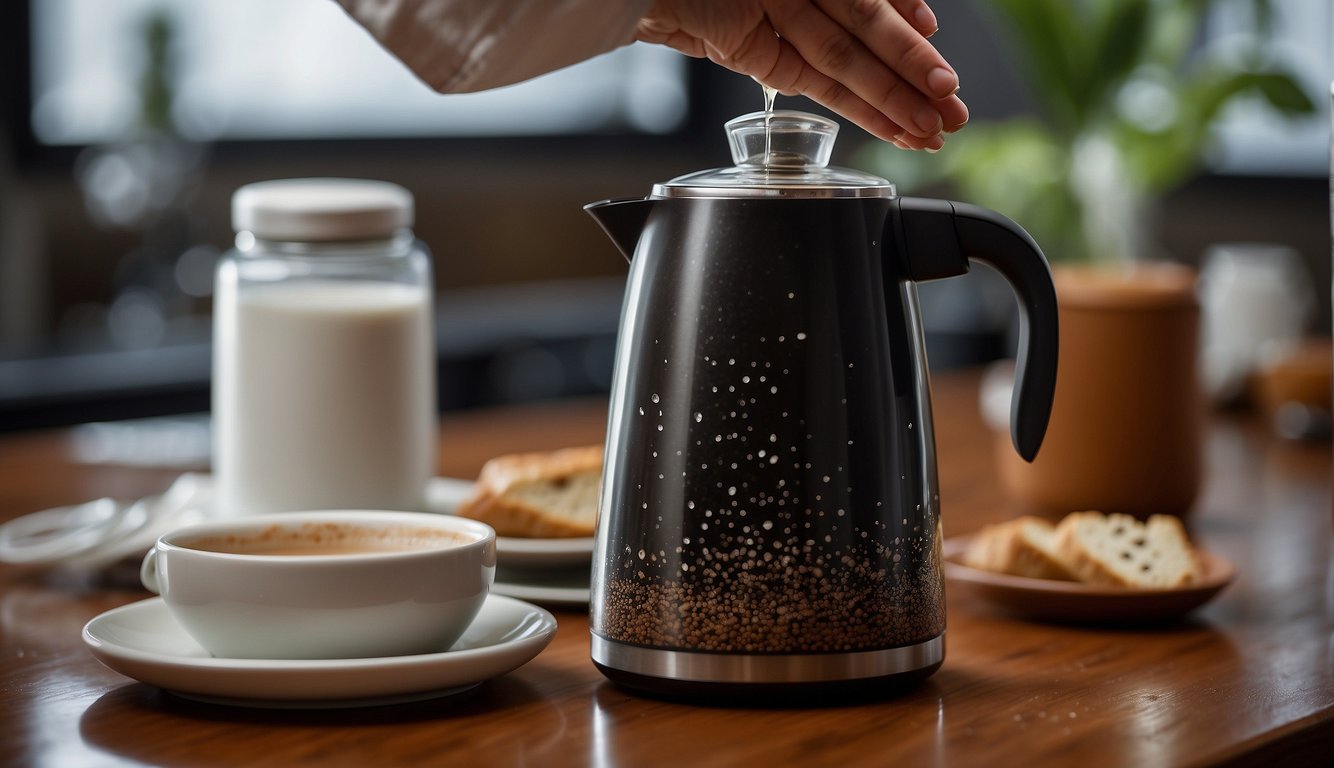
The key to successful stain removal is understanding the nature of coffee stains and the most effective methods to combat them. Various household items like baking soda, vinegar, and even denture cleaning tablets can be employed to cleanse your coffee thermos or pot. Regular cleaning not only improves the appearance of your coffee container but can also enhance the taste of your coffee by removing old residues that could affect flavor.
Key Takeaways
- Regular cleaning removes stains and improves coffee taste.
- Household items can effectively clean coffee containers.
- Understanding stain removal ensures better container maintenance.
Understanding Coffee Stains
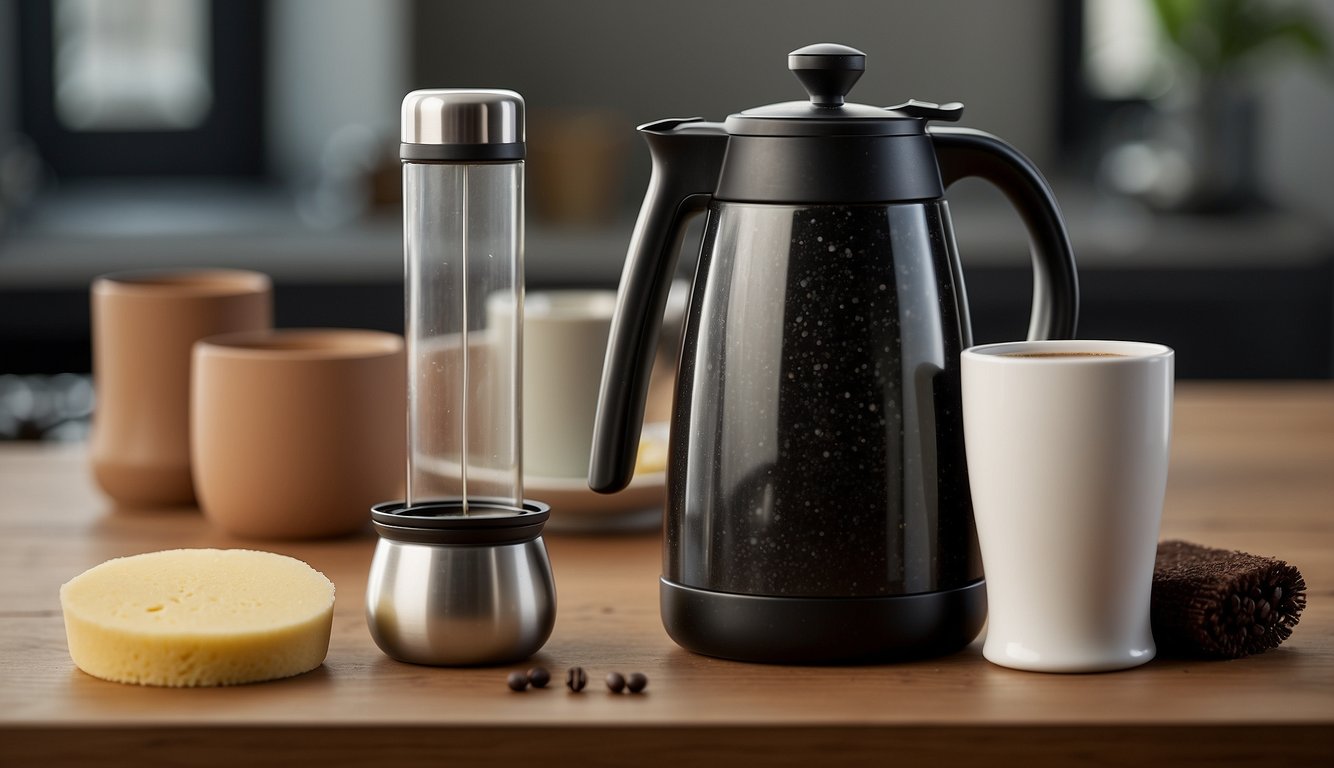
Coffee stains on thermoses and coffee pots are persistent and can alter the taste of future drinks. They necessitate various cleaning techniques depending on the stain type.
Science of Staining
Coffee contains compounds like tannins that bond to surfaces, leading to stains. Stainless steel, being porous, allows these compounds to adhere to the inner lining of thermoses and coffee pots. Heat from the coffee can set the stains, making them more difficult to remove.
Types of Coffee Stains
Coffee stains in thermoses and coffee pots can be fresh or set-in. Fresh stains have not had time to bond and are often easier to clean. Set-in stains, on the other hand, have been exposed to heat and time, causing them to adhere more strongly to the surface.
Preparing to Clean
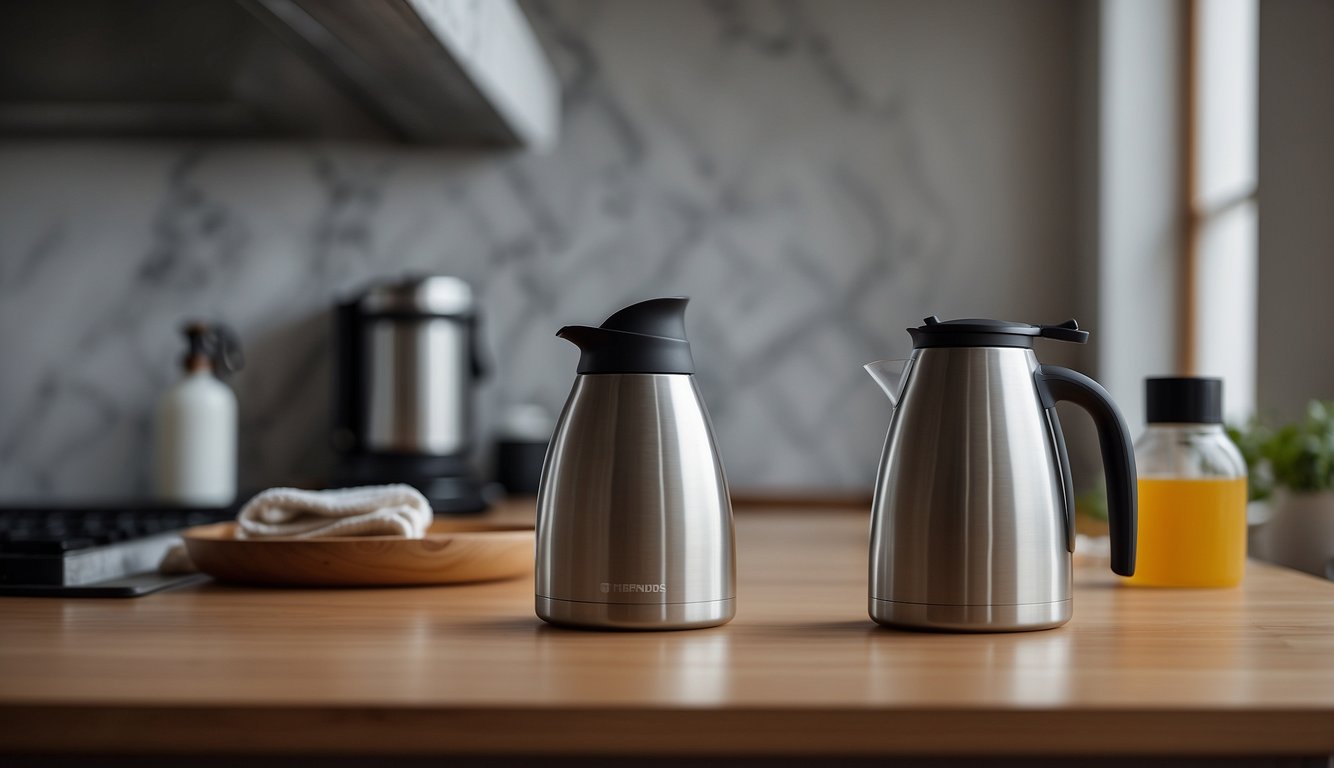
Before one starts the cleaning process, safety measures should be in place and the necessary materials need to be at hand.
Safety Precautions
One should ensure that the thermos or pot is cool to the touch to prevent burns. They should also work in a well-ventilated area if they’re using cleaning agents besides soap and water, like vinegar or baking soda.
Gathering Materials
In preparation, individuals need the following materials:
- Warm water
- Mild dish soap
- Baking soda or vinegar
- A soft scrub brush or sponge
- Rubber gloves (optional for extra hand protection)
- Dry towel or cloth for drying
They should gather these items prior to beginning their cleaning task.
Cleaning the Thermos
Removing coffee stains from a thermos requires specific steps. They ensure the thermos is clean, odor-free, and ready for your next beverage.
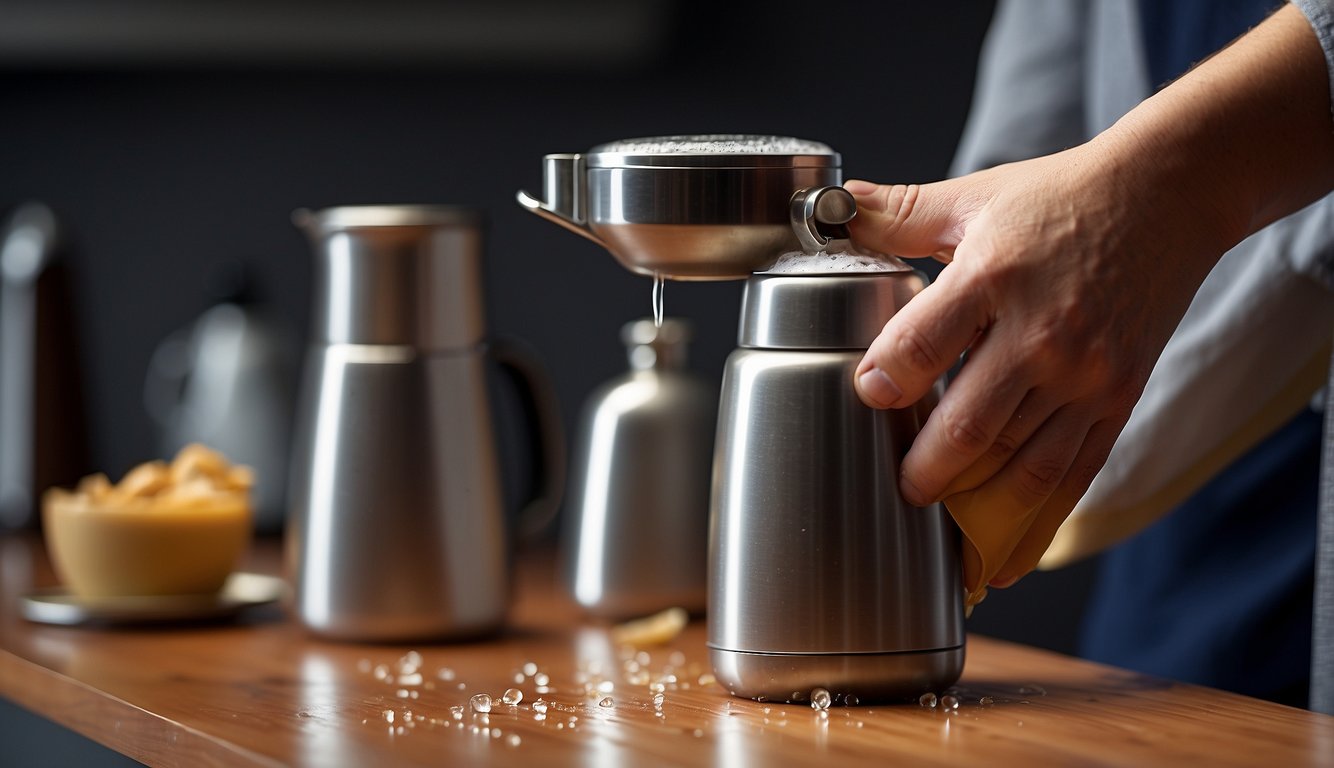
Rinsing Technique
Begin by rinsing the thermos with hot water to remove loose particles. If the lid has a seal, they should check it for debris.
Soaking Method
They should fill the thermos with a mixture of hot water and dish soap. A soak overnight loosens stubborn stains.
Abrasive Methods
For tough stains, they can create a paste using water and baking soda. Scrubbing with a brush helps remove the buildup.
Using Natural Cleaners
Natural cleaners like vinegar or lemon juice can effectively break down stains. After soaking, thorough rinsing is necessary.
Cleaning the Coffee Pot

When coffee stains mar your pot’s interior, routine washing often falls short. Specific approaches for glass and stainless steel ensure spotlessness.
Glass Pot Techniques
Glass coffee pots accumulate stains over time, which can affect the flavor of your coffee. One effective method to clean a glass coffee pot involves a solution of warm water and dish soap. Using a non-abrasive sponge or brush, one can gently scrub the pot’s interior. Then, rinse thoroughly to avoid soap residue.
An alternate approach involves using rice as a gentle abrasive. First, fill the pot with warm water and add a tablespoon of rice. Swirl the mixture to loosen the stains, then rinse the pot and wash with soap and water.
Stainless Steel Strategies
Stainless steel coffee pots require careful attention to avoid scratches. Using baking soda and water to create a paste is an effective method for tackling tough stains. Apply this paste with a soft cloth, gently rubbing it on the stained area, and then rinse well.
For persistent stains, cleaning agents like vinegar can be used. Mix equal parts of water and white vinegar, pour the solution into the pot, and let it sit for several hours before washing. It’s essential to rinse the stainless steel pot thoroughly to remove any vinegar smell.
Preventive Maintenance
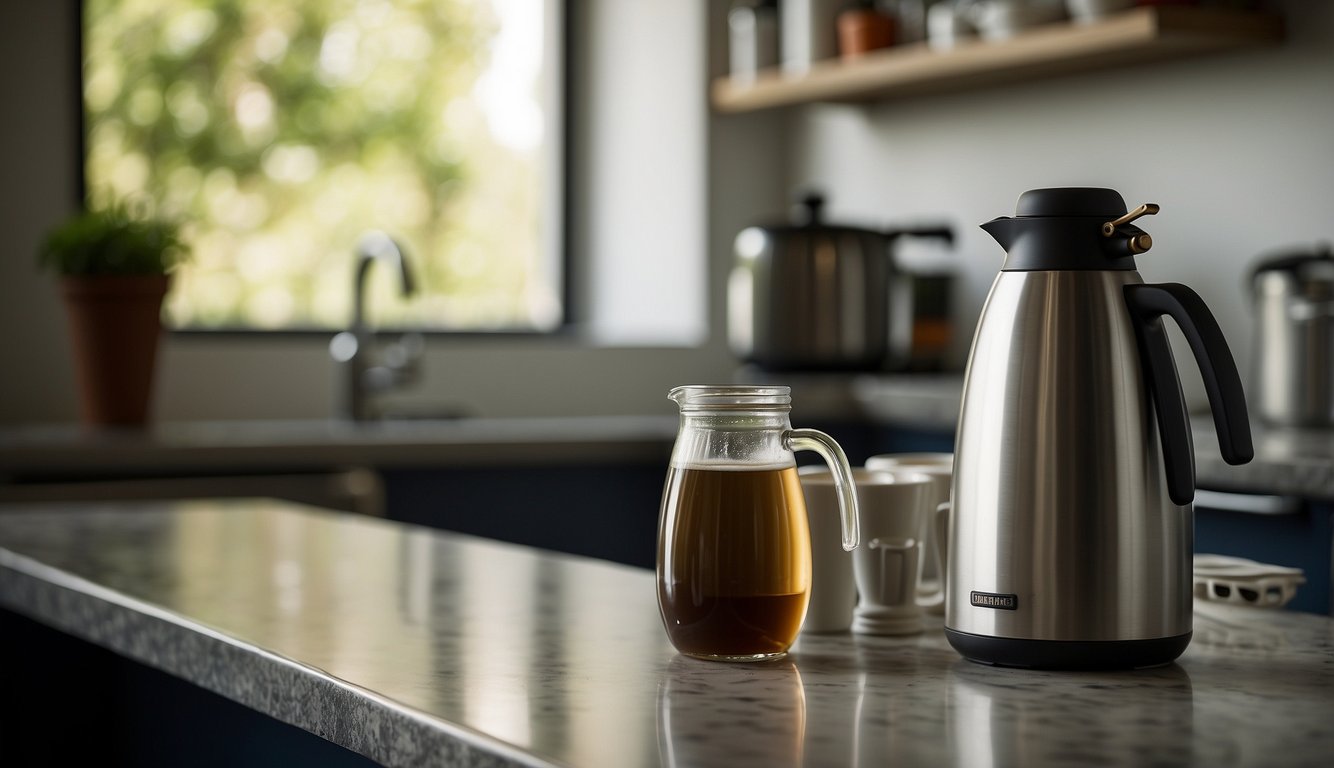
Maintaining a coffee thermos or pot before stains occur ensures its longevity and hygiene. Preventive measures reduce the need for deep cleaning.
Regular Cleaning Routine
They should establish a regular cleaning routine. After each use, a quick rinse with warm water removes residual coffee oils. One should use mild dish soap and a soft brush or sponge weekly to maintain cleanliness.
Immediate Action After Use
Taking immediate action after use is crucial. They should not let coffee sit in a thermos or pot for extended periods. Emptying and rinsing it with warm water right after finishing the coffee helps prevent stain buildup.
Troubleshooting Stubborn Stains
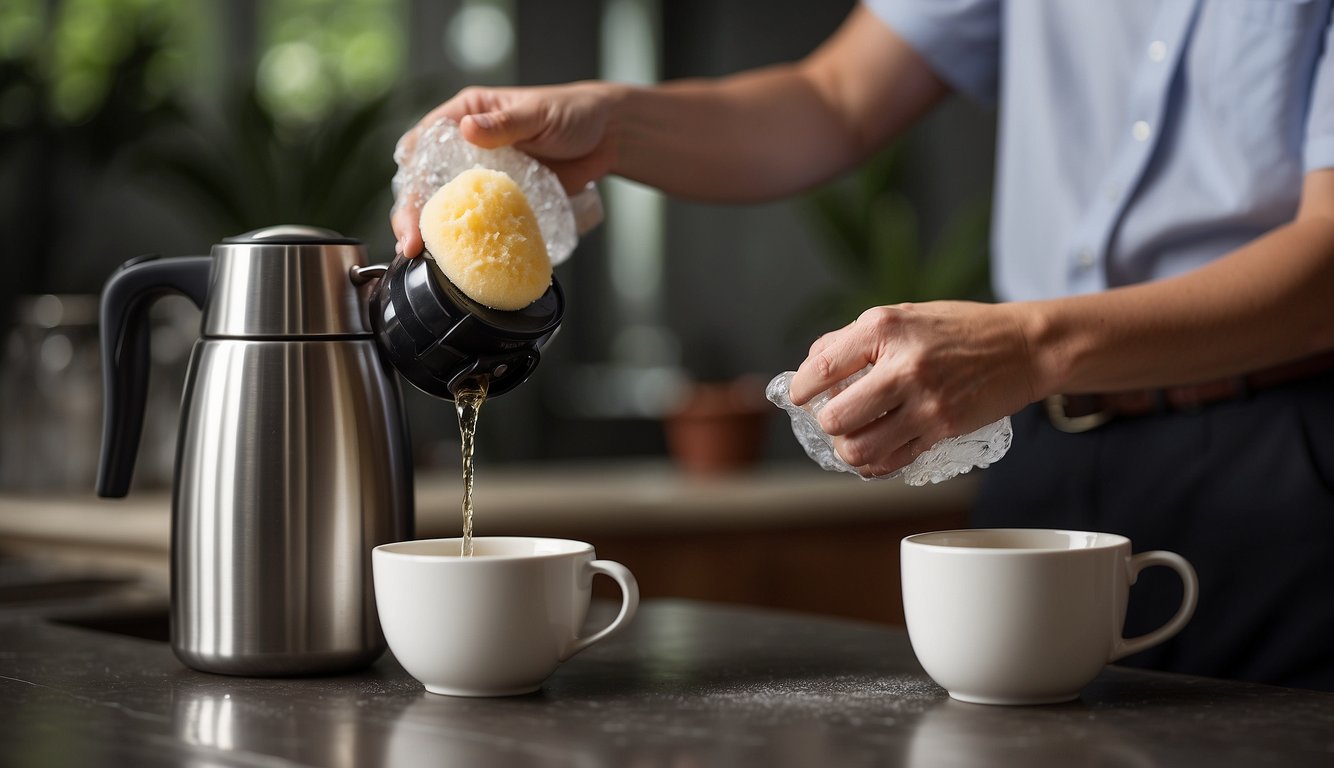
Sometimes coffee stains in a thermos or coffee pot can be particularly stubborn. These tips may help when the usual methods don’t work. Patience and the right approach are key to tackling tough stains.
For stains that won’t budge, one can try a denture cleaning tablet. They should fill their thermos with hot water and add a tablet. They need to allow it to sit for several hours before scrubbing.
If the stain persists, a mixture of baking soda and vinegar can be effective. They ought to fill the thermos with warm water and add the mixture. It’s essential to let it sit for 10 minutes before scrubbing with a bottle brush.
Another option involves using lemon juice to descale and remove stains. They should let the lemon juice sit in the thermos for a few hours. Then, they can use a scrub to remove the remaining residues.
| Stubborn Stain Solution | Instructions |
|---|---|
| Denture Tablets | Fill with hot water, add tablet, sit, scrub |
| Baking Soda & Vinegar | Fill with warm water, add, sit, scrub |
| Lemon Juice | Fill with lemon juice, sit, scrub |
Finally, one can mix ice and salt to tackle the stain. The coarse texture of salt and the chill from the ice help in loosening the stain. They must shake the mixture inside before rinsing.
These methods should help them restore their thermos or coffee pot back to a stain-free state. Each method requires a bit of soaking and some elbow grease with a scrub brush. They should rinse their thermos thoroughly after cleaning.
Aftercare and Storage
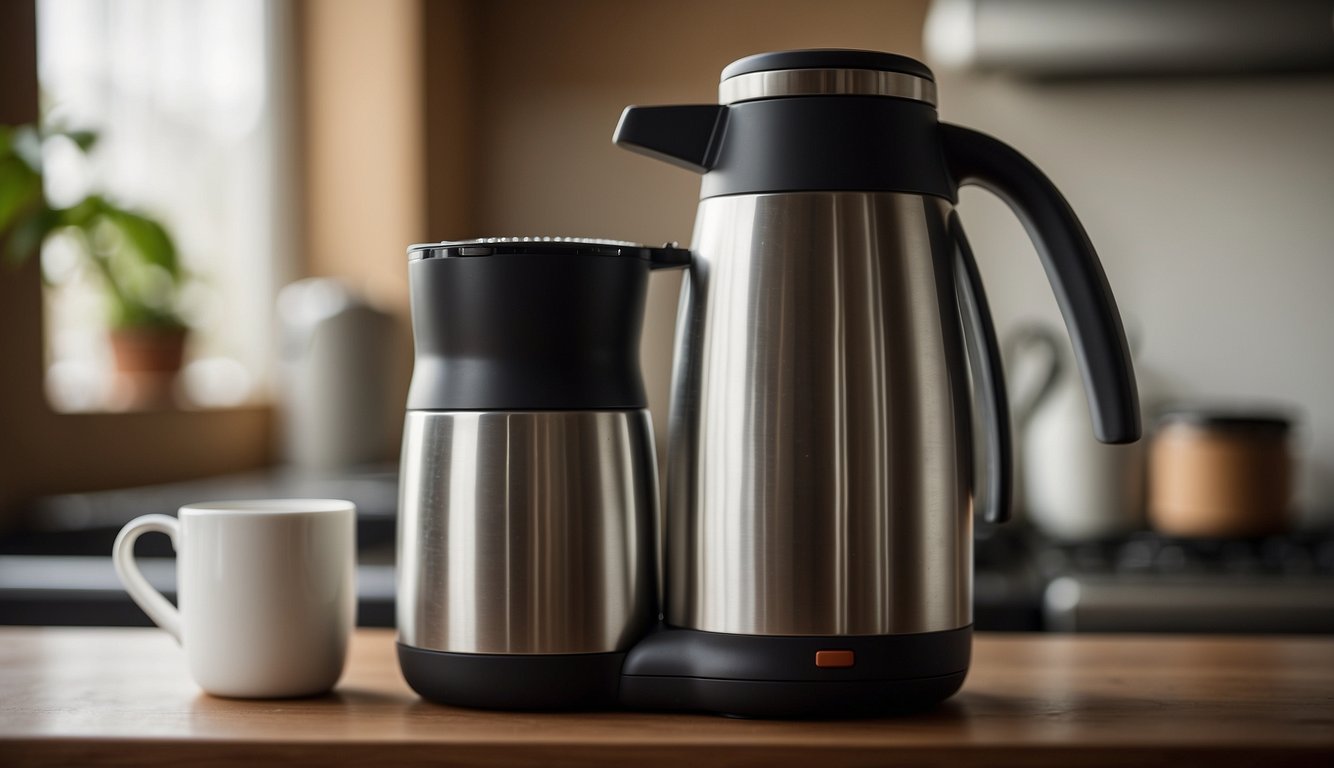
After cleaning a thermos or coffee pot, it is crucial for longevity to store them properly. One should ensure they are completely dry before storing. Moist environments can promote mold growth.
Storage Tips:
- Keep the lid off: Store the thermos with the lid off to allow air circulation.
- Upright position: Place thermoses and coffee pots upright to prevent any residual moisture from collecting at the bottom.
When not being used for long periods:
- Store with a paper towel inside: This helps to absorb any leftover moisture.
- Choose a cool, dry place: Avoid areas where temperature fluctuations are common, such as near ovens or windows.
For best results, users should perform routine maintenance. This includes inspecting the seal and lid for wear and tear. Replace any parts that are not functioning as they should.
Routine Checks:
- Seal integrity: Check the seal regularly for signs of deterioration.
- Lid fit: Ensure the lid closes properly to maintain heat retention.
Proper aftercare and storage will extend the life of a thermos or coffee pot. This ensures beverages stay hot or cold for future use. Users should follow these recommendations to enjoy their thermos or coffee pot for years.
Frequently Asked Questions
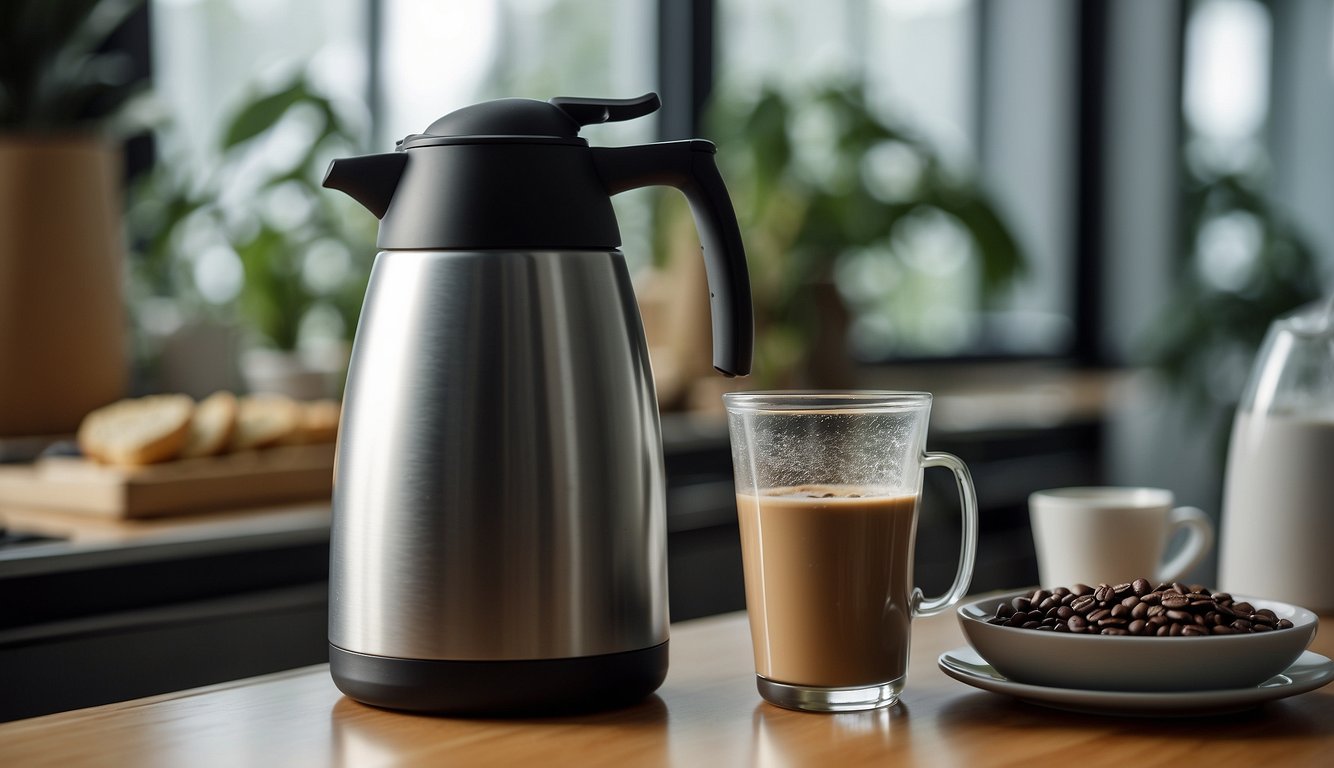
In this section, readers can find answers to common inquiries about tackling coffee stains in thermoses and coffee pots.
What is the best method to remove coffee stains from the inside of a thermos flask?
For tough stains, using a mixture of baking soda and vinegar proves effective. One should create a paste, apply it inside the flask, let it sit, then scrub and rinse.
Can bicarbonate of soda be used to clean a stainless steel flask?
Yes, bicarbonate of soda, or baking soda, can be used. It is a mild abrasive that helps remove stains when made into a paste with water.
What techniques can eliminate the smell of coffee from a thermos lid?
Soaking the lid in warm, soapy water can help. For persistent smells, a solution of equal parts water and vinegar should be used for soaking.
How should a thermos flask be cleaned for the first time?
One should clean it with warm, soapy water. After a thorough rinse, it’s best to then fill the flask with hot water and let it sit for a few minutes before final rinsing.
What is the process for cleaning the lid of a coffee thermos?
Clean the lid by disassembling it if possible and soaking in warm soapy water. For deeper cleans, using hydrogen peroxide can be effective, followed by a thorough rinse.
How can you remove brown stains from the inside of a coffee pot?
One can remove brown stains using a solution of vinegar and water. The user should fill the pot with this solution, let it sit, then scrub gently and rinse. Denture cleaning tablets are another effective option for soaking the pot.
